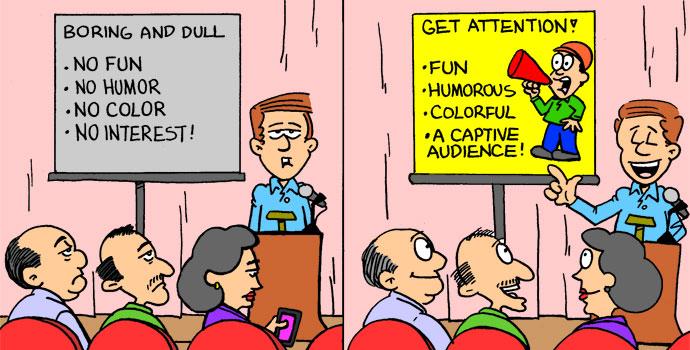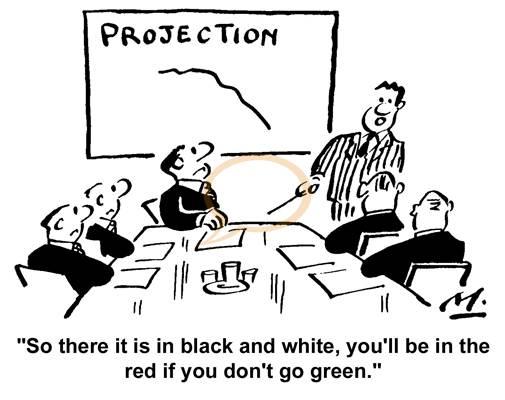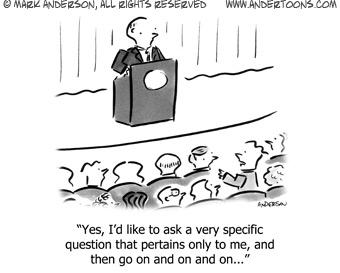
- •Предисловие
- •Unit 8. National stereotypes
- •8.1. Listening Development
- •8.2. Vocabulary Enrichment
- •8.3. Reading Improvement
- •The English and the French
- •The English through English Eyes
- •The English through French Eyes
- •The Americans and the Japanese
- •Americans through American Eyes
- •Americans through Japanese Eyes
- •8.4. Writing Enhancement
- •8.5. Speaking Reinforcement
- •Active vocabulary Unit 8. National Stereotypes
- •Unit 9. Countries and capitals
- •9.1. Listening Development
- •9.2. Vocabulary Enrichment
- •9.3. Reading Improvement
- •8 Wonders of belarus
- •Isle of tears
- •9.4. Writing Enhancement
- •9.5. Speaking Reinforcement
- •London versus Minsk
- •Unit 9 active vocabulary
- •Unit 10. Business trips. Travelling
- •10.1. Listening Development
- •10.2. Vocabulary Enrichment
- •If you want a good room, you should ……… .
- •I’d like ……… .
- •10.3. Reading Improvement
- •Passengers panic over false crash alarm
- •All aboard the flight from fear
- •10.4. Writing Enhancement
- •How to make a complaint
- •What to say in your complaint
- •Template letter
- •10.5. Speaking Reinforcement
- •Interviewing business travellers
- •Active vocabulary Unit 10. Business trips. Travelling
- •Idiomatic expressions
- •Unit 11. Holidays
- •11.1. Listening Development
- •11.2. Vocabulary Enrichment
- •11.3. Reading Improvement
- •11.4. Writing Enhancement
- •Inquiry letter brecon boating holidays
- •11.5. Speaking Reinforcement
- •Active vocabulary unit 11. Holidays
- •Hotels and Accommodation
- •Idiomatic expressions
- •Unit 12. The theatre and cinema
- •12.1. Listening Development
- •12.2. Vocabulary Enrichment
- •Anthony and Cleopatra at the National Theatre 1998
- •12.3. Reading Improvement
- •Jobs in cartoon animation
- •12.4. Writing Enhancement
- •Outline for a review
- •Introduction
- •Paragraph 2
- •Paragraph 3
- •Is the film recommended?
- •12.5. Speaking Reinforcement
- •Active vocabulary Unit 12. The Theatre and Cinema
- •Unit13on the phone
- •13.1. Listening Development
- •1) Imagine you are calling a company and want to speak to someone who works there. Can you think of any phrases you might use, or that you might hear? Put down these phrases.
- •13.2. Vocabulary Enrichment
- •Telephoning
- •Note: Giving numbers
- •13.3. Reading Improvement
- •Unfortunately there's a problem...
- •Telephoning across cultures
- •13.4. Writing Enhancement
- •13.5. Speaking Reinforcement
- •Active vocabulary Unit 13. Telephoning
- •Unit 14. Business correspondence
- •14.1. Listening Development
- •14.2. Vocabulary Enrichment
- •14.3. Reading Improvement
- •Job search email etiquette
- •14.4. Writing Enhancement
- •14.5. Speaking Reinforcement
- •Active vocabulary Unit 14. Business Correspondence
- •Unit 15. Meetings and negotiations
- •15.1. Listening Development
- •15.2. Vocabulary Enrichment
- •15.3. Reading Improvement
- •15.4. Writing Enhancement
- •15.5. Speaking Reinforcement
- •Meeting - agenda setting quiz
- •Active vocabulary Unit 15. Meetings and Negotiations
- •Useful English Phrases for Participating in a Business Meeting
- •Introducing the Agenda
- •Unit 16. Presentations
- •16.1. Listening Development
- •16.2. Vocabulary Enrichment
- •16.3. Reading Improvement
- •One size fits all?
- •16.4. Writing Enhancement
- •Presentation Scheme
- •16.5. Speaking Reinforcement
- •Active vocabulary Unit 16. Presentations
- •Introduce another speaker
- •Verbs to describe movements and trends
- •References
- •Contents
Unit 16. Presentations

16.1. Listening Development
Assignment 1. Listen to the recording to Unit 16 looking at the language of presentations. Business English expert David Evans reassures listeners claiming that presentations don’t have to be such a huge ordeal if the presenter is properly prepared. Do the tasks below.
Two examples of the beginning of presentations are given. Say what they have in common.
That is a typical pattern to begin a presentation. Listen to the first two examples again and put down the exact wording at each stage.
|
Standard stages |
Presentation 1 |
Presentation 2 |
|
Greetings |
|
|
|
Saying thanks for coming |
|
|
|
Introduction |
|
|
|
Stating the purpose of the presentation |
|
|
|
Giving the outline of the presentation |
|
|
|
Inviting questions from the audience |
|
|
The body of a presentation is its main part. True or false?
Presenters resort to visual aids to illustrate their points. True or false?
Fill in the gaps with the phrases the two speakers used to draw the attention of the audience.
Presentation 1
“____________________________________________ you can see that our sales topped 50 million the year before last. Then last year sales dropped to 40 million with a slight recovery at the end of the financial year. However this year sales have continued to drop to an all time low of 30 million. ______________________________________ As you can see we have 25% of the market share, 10% down on last year.”
Presentation 2
_________________________________ how important internal communications are, is shown by some findings from research that we have recently undertaken. Good communications is a very key factor in staff motivation. _________________________________________, you will see how important it is to get the basics in place. You need to identify your communication requirement, agree your objectives and success criteria, identify your target audiences, define the content of your message, and determine the style of delivery. _________________________________ the communication process is when all those basics fall into place naturally.
How do presentations typically end?
How did Tim signal that it was question time?
What did Tim say handing the questions to make those who asked them feel valued and wanted?
16.2. Vocabulary Enrichment
Assignment 1. What are the purposes of these expressions? Which of them are synonymous? Which of them are used when showing visuals (charts, graphs, diagrams, etc.)
1 I'd like us to focus our attention on ...
2 What is interesting/important here is ...
3 I'm sure the implications are clear to all of us ...
4 The figures in this table show ...
5 It is important to notice that ...
6 The take-home message here is ...
7 We can conclude that ...
8 This chart compares ...
9 I'd like you to think about ...
10 If you look at the top right-hand corner ...
11 The lesson we can learn from this is ...
12 The blue dotted line represents ...
13 The top half shows ...
14 Now, I'll show you ...
15 Let's move on now and look at the figures for ...
16 The significance of this is ...
17 I would like you to concentrate on this green column ...
18 The next overhead shows ...
19 As we can see ...
20 The vertical axis represents ...
Assignment 2. Put the following phrases from a presentation in the right order. Write numbers in the boxes.
I’d like us to focus our attention on two things on this chart.
OK, let’s get started. Can everybody see?
Right, that brings me to the end of my presentation.
Right, let’s begin with the first slide.
I’ll come back to this in a moment.
Now, do you have any questions?
This leads me to my third point, which is …
Just to summarize the main points again before I finish.
Assignment 3. Fill in the gaps with the prepositions from the box.
about at back in in in into for of on on on on to to to with
Take a look ______ this picture. What does it tell you ______ our company?
I've divided my talk ______ four main parts.
Right, let's begin ______ the first slide.
Let's move ______ the second point.
This leads me ______ my third main point.
I'll come ______ this in a moment. ('on' is possible in #6, but isn't the answer here.)
My own view ______ this is simple. (‘of’ is possible in #7, but isn't the answer here)
I think there are three questions to focus ______.
As you can see ______ this next slide, ... I ('in' is possible in #9, but isn't the answer here.)
So, ______ conclusion, I hope that my talk has given you a good overview ______ our company.
Thank you all ______ coming.
Here's my email address ______ case you want to get ________touch.
Assignment 4. Complete the sentences with the pairs of words in the box.
anyone /comments brings / end digress / moment
examine / detail explain / again explain / concrete
highlight/ diagram question / opinion scope / afterwards
time / question useful / background start / introducing
1 Let me _____________ by _____________ myself.
2 Just to _____________ for a _____________.
3 It might be _____________ to give a little _____________ here.
4 Let's _____________ this in more _____________.
5 Let me _____________ with a _____________ example.
6 I'd like to _____________ two things on this _____________.
7 Does _____________ have any _____________?
8 Right, that _____________ me nearly to the _____________ of my presentation.
9 Sorry, can you _____________ that _____________ ?
10 That's an interesting _____________. What's your own _____________?
11 I think that's outside the _____________ of this presentation, but I'm happy to discuss it with you _____________.
12 OK, I think there's _____________ for one last _____________.

Assignment 5. Underline the correct words in italics in this extract from an internal presentation.
This next chart shows sales for our two main product lines, the Micro range and the Neka range. 1Mark / Notice the scale on the vertical 2axis / axle - it shows the number of 3units / unities sold in thousands per month.
I'd like to 4draw I make your attention firstly to the black line, which shows sales of the Micro range. You can see how last year sales 5rose / have risen 6steady / steadily all through the year. Since the beginning of this year they 7continued / have continued to rise, 8although / in spite of at a slower pace.
On balance, these results are good - 9steady / steadily 10grow /growth is what we like to see. This generally positive picture is 11due to /due from the performance and reliability of the Micro range, and the fact that our competitors have been slow to respond. 12Even so / Even though, we cannot be complacent. We have to build on this success going forward, and I want our sales teams to really focus 13about /on the Micro range 14over /from the next few months.
I'm going to set an ambitious target - to take sales of Micro products from their current level of 30,000 per month 15to / until a 16figure / number of 35,000 by the end of the year.
OK, now let's 17look at / look to the purple line on the chart, which shows sales of the Neka range. As you know, we launched this range in December of last year, and sales 18took off / were taking off immediately. For the first few months things 19were really looking good / had really looked good. We were expecting this because we 20were doing / had done a lot of market research before the launch. 21However / Whereas, for no obvious reason, there 22was / has been a 23sudden /suddenly 24drop / reduce in sales in recent weeks. The question is this: can we find out the 25motives / reasons and what can we do 26about /for it?
In a moment I'm going to open up the discussion and ask for your 27comments / commentaries. But the implications are clear: it's 28high / highly 29'chance / likely that we won't meet our target of 25,000 30by / for the end of the year.
Assignment 6. The language of trends is used to describe movements in financial indicators (e.g., profits or costs), sales and marketing indicators( e.g., sales and market shares), and economic indicators (e.g., interest rates and unemployment, etc.) Draw charts next to explain these group of words.
Movement up and down: go up, increase, rise, go down, decrease, fall
Smaller movement up and down: edge up, edge down, dip
Stability and instability: stay the same, be flat, fluctuate, vary, move within a range
Larger movement up and down: double, take off, boom, increase tenfold, halve, plunge, crash
High points and low turning points: peak, reach a peak, hit a low
Individual points on a graph: stand at, be above, be below
Change in size: grow, expand, shrink, contract
Good / bad: improve, get better, recover, deteriorate, get worse (mind the difference in showing how sales improved, and how inflation improved)
Speed: quickly, rapidly, gradually, steadily, slowly
Amount: considerably, significantly, moderately, to some extent slightly, marginally
Assignment 7. Translate into English’
Sales _____________ (оставались) at €1.2m.
Sales _____________ (выросли) by €0.2m that is by 25%
Sales _____________ (поднялись с) €2.2 to €1.4m.
There was an _____________ (рост) in sales of €0.2mю
Things were easier in the company a few years ago, while profits _____________ (возрастали).
Before the CEO resigned profits _____________ (уже упали) by 20% in a year.
Prices _____________ (поднялись ) lately because of higher materials costs.
Our competitors _____________ (столкнутся с) the same problems as us.
Sales rose ______ (на) 2% last quarter.
Profits have plunged _____________ (значительно) this year.
Inflation _____________ (ухудшается) at the moment.
I'm sure it's _____________ (достигнет своей низшей точки) next month.

